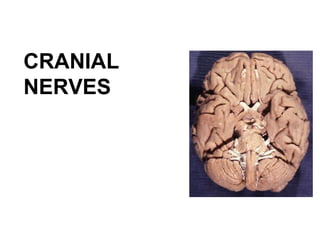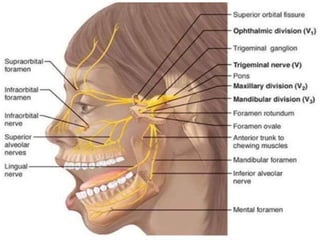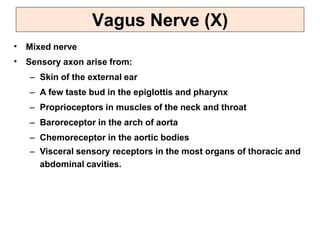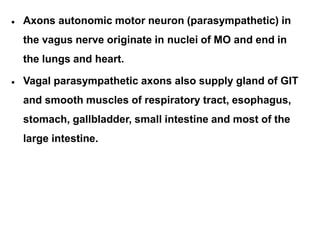The 12 pairs of cranial nerves arise from the brain and pass through openings in the skull bones. They are categorized as sensory, motor, or mixed nerves. The document then proceeds to describe each of the 12 cranial nerves individually, detailing their origin, branches, functions, and innervations. It provides information on sensory and motor fibers for each nerve.














































































